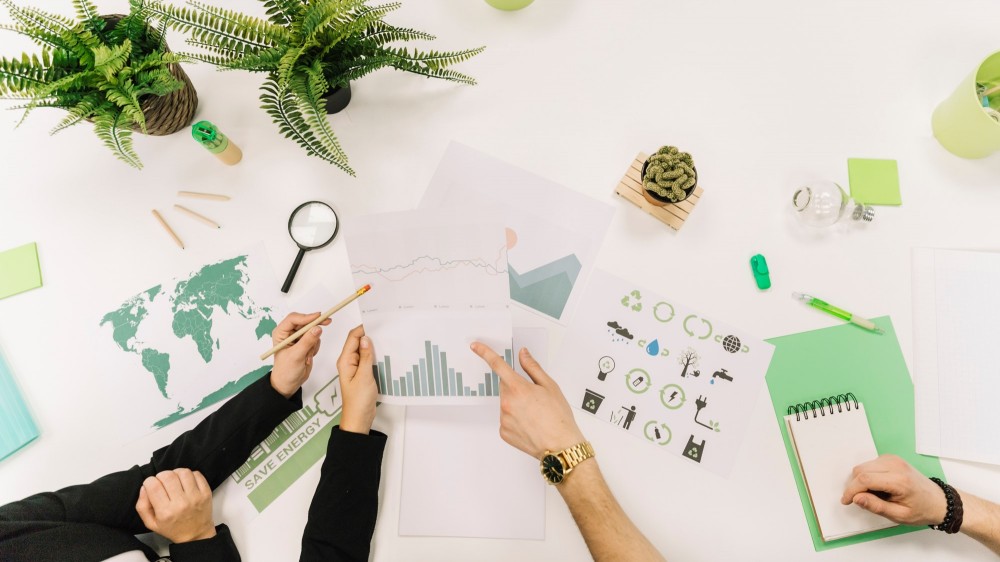In recent decades, energy consumption and environmental policies have been the subject of scientific and legislative debate as a result of the increasing awareness of their impact on society. Although energy is a driving force behind development, it is also responsible for environmental and climate related problems. In addition, the awareness around the scarcity of natural resources and climate change motivates the implementation of legislative measures that promote the concept of sustainability in energy decision-making.
The Current Scenario
The current situation concerns governments, entrepreneurs, and consumers. They put into perspective the consequences of their ecological footprint, broken down into the five environmental risks:
1. Use of non-renewable energy sources: currently, about 82.5% of the total energy consumed comes from fossil fuels;
2. Emissions and air pollution: between 1850 and 2019, it is estimated that 2400 giga tonnes of CO2 were emitted from human activity;
3. Water consumption and pollution: forecasts indicate that in 2030, 700 million people could suffer from a shortage of drinking water;
4. Use of non-biodegradable materials and production of waste: every year, more than 12.7 million tonnes of waste are dumped into the oceans;
5. Impact and ecological damage: it is estimated that in the next 30 years the ecological footprint will grow faster than the population.
Sustainability Dimensions
As far as organisations are concerned, the paradigm that previously focused on compliance with legislation and the reduction of energy consumption is now more encompassing. Sustainability concerns energy and environmental issues, but also social issues. Decisions made by organisations can have an impact not only on their costs, but also on their market growth potential and ability to draw in talent.
The cost factor is still the most striking for most organisations. In fact, the cost of raw materials is expected to continue to rise in the coming years, following the example of metals and rubber, the price of which has increased by 170% and 260% over the last 15 years. Energy consumption also accounts for an increasing share of costs, with the price of electricity rising by 32% in Europe over the last 10 years. In the last decade, the cost of materials and raw materials has been combined with the costs of penalties for non-compliance with environmental legislation.
60% of consumers place a brands sustainability reputation as a preponderant factor in their purchase decisions. Neglecting to build the identity of the organisation around these themes may result in a loss of market share and make it unfeasible to enter markets where this point is already a must-have. Following this trend, 93% of the world’s 250 largest companies have already published annual sustainability reports. In terms of talent acquisition and retention, 36% of the workforce prefer employers who have a strong culture of social equality and focus on sustainability. In this context, the environmental issue is also critical for the company’s reputation, being the focus of the marketing and public relations teams.
The Path Towards Transformation
Awareness of the current complexity of the topic encourages the implementation of targeted and properly structured methodologies that call for the transformation of current paradigms and the standardisation of a new improvement and sustainability culture in organisations. Toyota, Nespresso and Danaher are examples of organisations that have been able to take maximum advantage of a structured process: 8% reduction of CO2 emissions at Toyota, 25% recycling of raw materials at Nespresso and 25% reduction of energy consumption at Danaher.
In progress towards a sustainable future, it is necessary to act on the total life cycle of the product. First, it is necessary to create an awareness and a sense of urgency in the organisation regarding sustainability. This can be done by a diagnosis that allows the teams to identify the starting point and the main strategic initiatives to be addressed. Simple systems for collecting and sharing key indicators should be implemented.
Transforming operations so that they are based on sustainable processes is the second step. This transformation involves reducing energy consumption and choosing materials with a reduced carbon footprint. An additional approach is to address the traditional Lean 7 wastes, by reducing these, the company will almost certainly become greener.
The third point to address is the supply chain. It must be ensured that the selected suppliers are aligned with the sustainability policy that is intended to be achieved, be they suppliers of raw materials or services.
Finally, a redesign of the product should be carried out with the goal of achieving a circular economy. This may involve changing materials, incorporating technology to monitor critical indicators, capitalising synergies between different products/services already in the market or even recovering and recycling waste.
Sustainability should not be a momentary business trend, but rather as a strategy for a future of positive and sustainable results. This requires an end-to-end approach that considers the entire performance of the organisations, coordinating the contribution of the different departments towards the final goal. This is a movement of cultural and procedural transformation.
#strategy and leadership #sustainability
See more on Strategy & Leadership
Find out more about improving this business area
